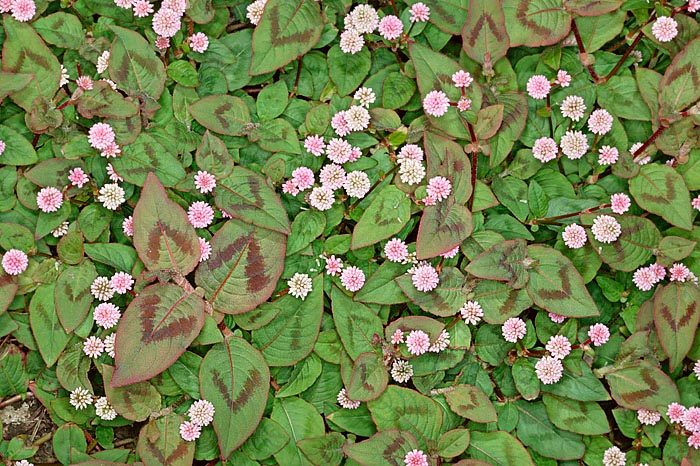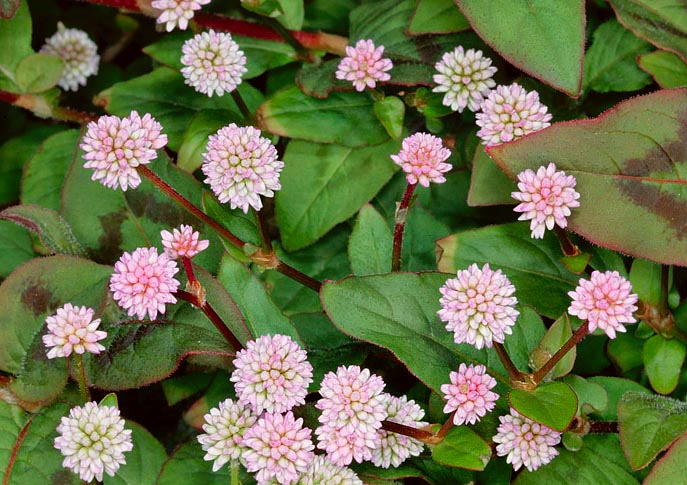Family : Polygonaceae

Text © Pietro Puccio

English translation by Mario Beltramini

Persicaria capitata is perennial herbaceous often used as soil cover © Giuseppe Mazza
The name of the genus comes from the Latin “persicarius, a, um” = similar to a peach tree, with reference to the shape of the leaves; the name of the species is the Latin adjective “capitatus, a, um” = having a head, with reference to the shape of the inflorescences.
Common names: Japanese knot-weed, magic carpet plant, magic carpet polygonum, pink-buttons, pink-head knotweed, pink-head persicaria, pinkhead smartweed (English); tou hua liao (Chinese); renouée capitée (French); poligono de jardim (Portuguese); nudosilla (Spanish); KopfKnöterich (German); nghể hoa đầu (Vietnamese).
The Persicaria capitata (Buch.-Ham. ex D.Don) H.Gross (1913) is a perennial herbaceous species with woody base, evergreen, 5-30 cm tall, much ramified with brown or reddish purple branches, 15-25 cm long, creeping and rooting at the nodes. The leaves, on a 0,3-0,6 cm long petiole, are ovate with serrate, hairy margins, and pointed apex, 1,3-5 cm long and 0,6-2 cm broad, pubescent, of green colour at times with V-shaped variegation of a darker green colour or red, pink or bronze.

The inflorescences are dense terminal capitula with 1 mm flowers. Medicinal virtues © Giuseppe Mazza
It easily reproduces by seed, shallowly placed in light loam, which germinates in 3-6 weeks at the temperature of 20-22 °C, by division and by cutting. Vigorous species of easy cultivation and little maintenance which quickly expands thanks to the branches rooting easily at the nodes, ideal for covering embankments and slopes with its variegated leaves and the crowd of inflorescences produced from spring to autumn.
Cultivable in the tropical, subtro- pical and warm temperate climate zones, in cooler climates it behaves as deciduous or as annual, thanks to the facility with which it auto-disseminates, so much to become invading under favourable climate conditions. It requires full sun in order to bring out the variegations, but it grows well also in shaded position and, well rooted, it may stand periods of dry. It is cultivable also in pot, as drooping, in draining loam rich of organic substance. The leaves are utilized in the traditional medicine for various pathologies.
Synonyms: Polygonum capitatum Buch.-Ham. ex D.Don (1825); Cephalophilon capitatum (Buch.-Ham. ex D.Don) Tzvelev (1987).
→ To appreciate the biodiversity within the POLYGONACEAE family please click here.
